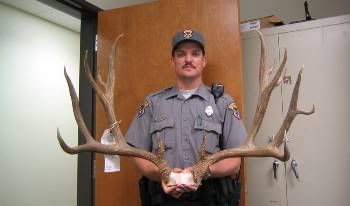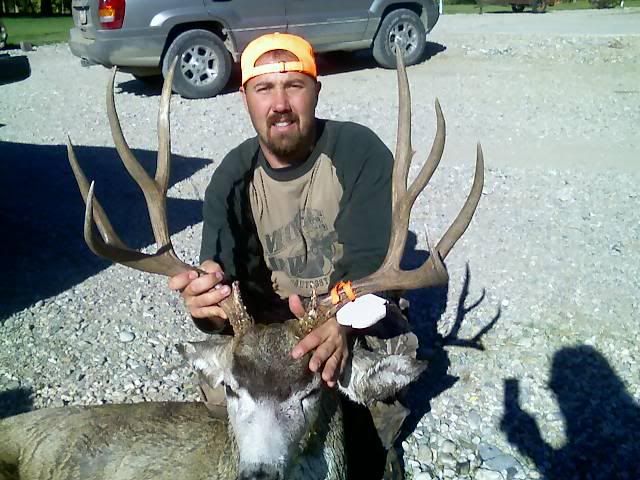This fellow was kind of screaming from his soapbox, but what he says of Pennsylvania certainly holds true for the west and for mule deer, namely: low deer numbers, hunters paying the way but having their money used against them, policy makers being manipulated by special interests, trendy methods of mis-estimating deer numbers, a younger generation losing interest, and agencies losing sight of whom they serve.
To the editor:
In response to several letters to the editor on the subject of support, or lack of it, for the Pa. Game Commission’s request for a license fee increase, it would seem that some folks are still in the dark.
I am speaking only my opinion, but I believe the majority of sportsmen in Pennsylvania do not want to bankrupt the PGC. Yes! Even most deer hunters! They realize that 99 percent of employees who work in the field and offices are doing a good job. That said, there are handful of policy makers that make one wonder what the real agenda is for the future of our State Game Lands in Pennsylvania.
It would be a good bet that the special interest groups who drive the current PGC policies on the drastic reductions in the deer herd are the very ones who stand to gain the most if the PGC is eliminated. Both PGC and hunters have a lot to lose in this battle.
If, as Mr. Robert Gratson and Mr. Wes Waldron’s letters would lead you to believe, that a majority of hunters are behind the deer policies of the PGC . Then, what’s all the fuss about! With just a “minority” of “greedy,” “ignorant” and “self-centered” deer hunters to contend with, the PGC should have all the support it needs!
Despite new and “trendy” methods of estimating deer numbers by “population trends,” large areas of the state have extremely low deer populations. And a “large number” of the deer hunters have been screaming their collective heads-off.
Ever hear of the Pennsylvania deer wars, guys? The PGC’s message to you fellows who hunt and live in areas of the state where there are severe “down trends” are, shut-up and hand over the money! Thousands upon thousands of letters have been written by hunters, some quitting the sport, some just plain disgusted.
And with a younger generation of hunters, who are unwilling to spend days in the woods without seeing any deer, a person might wonder what they are missing? One might also wonder why, with so many supposedly behind the current deer management policy that hunting license sales are falling at an alarming rate? Mr. Waldron, in true bureaucratic fashion, states that managing a deer herd “goes beyond the understanding” of most sportsmen.
There is a lot of truth in this, there are many factors to take into account for healthy and diverse habitat management. But one thing sportsman do completely understand is more often than not, when bureaucrats and special interests get involved, the problem gets worse!
If you question this, start doing a little research on what has happened with the wolf reintroduction out west! With all the “science” and “biology” and millions upon millions in research funding, game managers have created a nightmare for hunters, hikers, pet owners, ranchers and the local ecosystems.
The damage that has been done to elk and mule deer populations has been tremendous. But of course, big brother always knows what’s best for us, right? And there in lies the problem with the PGC, and the deer hunters of Pennsylvania.
A large part of revenue is provided by deer hunters through license sales. When policies that directly affect the future of our deer herd are enacted, hunters take a back seat and are told they are not really smart enough to understand the “big picture.”
What they are seeing with their own eyes, just isn’t so! The picture that hunters see, in a lot of areas of the state, is a bleak one. There is no doubt that some areas still have large populations of deer, private property and limited hunting around the suburbs are special issues and certainly need to be addressed. But what would it really take to bring the PGC and deer hunters together for the benefit of all involved? Again, I can only speak for myself but I think if the PGC should step forward and own up to the facts that current deer-control policies have been too drastic in a lot of areas, and acknowledge there is a problem!
Admit that the management areas may be too large and diverse to be effectively managed. And most important to sportsmen impose a two to three-year moratorium on the two-week concurrent seasons, until some accurate herd data can be compiled to support claims on both sides of the issue.
If the PGC would reach across the aisle with meaningful solutions, instead of lip-service and suspect studies, they would find that all the sportsmen of Pennsylvania would rally around them! Deer hunters included! But don’t hold your breath that will happen. The handful of people who are driving these policies will succeed by driving a wedge between hunters and the PGC.
And in dividing us against each other, both PGC and hunters lose! The extreme environmentalist movement is at work here and we all know where hunting as a whole stands with them ! The PGC has done a lot of good things over the years, and there are many more success stories than failures. It will be the end of another era in Pennsylvania hunting history, most likely for the worse. But when any organization loses sight of who they are supposed to be serving, they cannot survive. But then again, maybe that’s been the real plan all along, to destroy the PGC from with in. Hmm, do you think the people who help accomplish this will get jobs when administration of Pa. Game Lands goes to DCNR?





